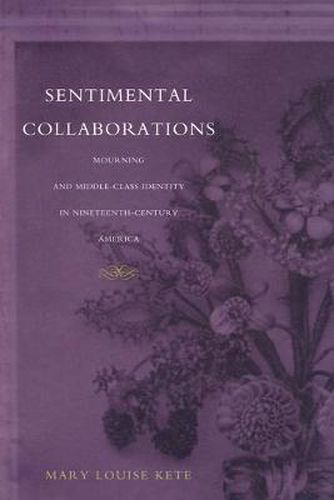Readings Newsletter
Become a Readings Member to make your shopping experience even easier.
Sign in or sign up for free!
You’re not far away from qualifying for FREE standard shipping within Australia
You’ve qualified for FREE standard shipping within Australia
The cart is loading…






This title is printed to order. This book may have been self-published. If so, we cannot guarantee the quality of the content. In the main most books will have gone through the editing process however some may not. We therefore suggest that you be aware of this before ordering this book. If in doubt check either the author or publisher’s details as we are unable to accept any returns unless they are faulty. Please contact us if you have any questions.
A study of how sentiment has been an important and recurring form of cultural narrative that has helped to shape middle-class American life. Many scholars have written about the sentimental novel as a primarily female genre and stressed its negative ideological aspects. Mary Louise Kete finds that in fact many men - from writers to politicians - participated in 19th-century sentimental culture. Importantly, she also recovers the utopian dimension of the phenomenon, arguing that literary sentimentality, specifically in the form of poetry, is the written trace of a broad cultural discourse that Kete calls sentimental collaboration - an exchange of sympathy in the form of gifts that establishes common cultural or intellectual ground. Kete reads the works of Ralph Waldo Emerson, Henry Wadsworth Longfellow, Mark Twain, Harriet Beecher Stowe, and Lydia Huntley Sigourney with an eye toward the deployment of sentimentality for the creation of Americanism, as well as for political and abolitionist ends. Finally, she locates the origins of sentiment in the activities of ordinary people who participated in mourning rituals -writing poetry, condolence letters, or epitaphs - to ease their personal grief.
$9.00 standard shipping within Australia
FREE standard shipping within Australia for orders over $100.00
Express & International shipping calculated at checkout
This title is printed to order. This book may have been self-published. If so, we cannot guarantee the quality of the content. In the main most books will have gone through the editing process however some may not. We therefore suggest that you be aware of this before ordering this book. If in doubt check either the author or publisher’s details as we are unable to accept any returns unless they are faulty. Please contact us if you have any questions.
A study of how sentiment has been an important and recurring form of cultural narrative that has helped to shape middle-class American life. Many scholars have written about the sentimental novel as a primarily female genre and stressed its negative ideological aspects. Mary Louise Kete finds that in fact many men - from writers to politicians - participated in 19th-century sentimental culture. Importantly, she also recovers the utopian dimension of the phenomenon, arguing that literary sentimentality, specifically in the form of poetry, is the written trace of a broad cultural discourse that Kete calls sentimental collaboration - an exchange of sympathy in the form of gifts that establishes common cultural or intellectual ground. Kete reads the works of Ralph Waldo Emerson, Henry Wadsworth Longfellow, Mark Twain, Harriet Beecher Stowe, and Lydia Huntley Sigourney with an eye toward the deployment of sentimentality for the creation of Americanism, as well as for political and abolitionist ends. Finally, she locates the origins of sentiment in the activities of ordinary people who participated in mourning rituals -writing poetry, condolence letters, or epitaphs - to ease their personal grief.